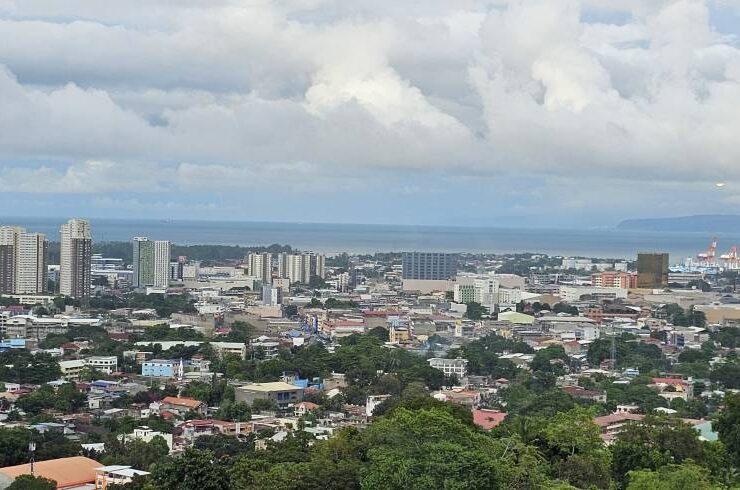Liberalism vs conservatism

Our Supreme Court and the Catholic Church—the bulwarks of conservatism and tradition—are moving progressively on a crucial but rocky road to liberalism. In contrast, the Supreme Court of the United States (Scotus), the traditional bastion of liberalism, has turned conservative. Meanwhile, US citizens will face a crossroad between these two philosophies of liberalism and conservatism when they cast their ballots during their coming presidential election.
AN EXAMPLE OF THE COURT’S TREK TO LIBERALISM is Republic v. Ng (Feb. 27, 2024, per J. Japar B. Dimaampao, en banc, 13-2) which ruled that Philippine courts can recognize divorces obtained abroad by a Filipino married to a foreigner whether through legal or administrative process or even by mutual agreement (as practiced in Japan and Korea). The divorce need not have been obtained by a final judgment of a court or an administrative office of the foreign country.
It held that a statute cannot always be interpreted literally; rather it “must be read according to its spirit or intent. Courts ought not to … accept an interpretation that would defeat the intent of the law and its legislators. The legislative spirit animating Article 26(2) of the Family Code is precisely to correct this anomalous situation where the foreign spouse is free to contract a subsequent marriage while the Filipino spouse cannot … For indeed, it would be unjust for a Filipino spouse to be prohibited by [his/her] national laws from something that a foreign law may allow. Clearly, our laws should not be intended to put Filipinos at a disadvantage.”
Another example: Pulido v. People (July 27, 2021, per J. Ramon Paul I. Hernando, en banc, 15-0) declared that an accused may be acquitted of bigamy “even without obtaining a judicial declaration of absolute nullity” of the first marriage that is void ab initio. Nonetheless, a judicial declaration is still required for “purposes of remarriage” and for determining the civil rights arising therefrom—like heirship, legitimacy of children, settlement of estates, and dissolution of property regimes.
Frankly, I am surprised at the liberal path of the Court given that 13 members are “insiders” who, having risen from the judicial ranks, are expected to be conservative. Only two members are “outsiders”—from the University of the Philippines College of Law and the Department of Justice, who, to no surprise, are liberals.
THE CATHOLIC CHURCH HAS ALSO BEEN LIBERALIZING. When I was a student, priests faced the altar during masses, mumbling unintelligible (to the faithful) Latin that frankly turned me off. However, Vatican II (1962-1965) has made the Church more humane and ecumenical. Masses are now celebrated by priests facing the faithful and in languages understood by them like English, Ilocano, Chinese, Vietnamese, etc. The reforms of Vatican II were implemented here by PCP 2 (Second Plenary Council of the Philippines). Its “Acts and Decrees” have been compiled into one book.
Pope (now Saint) John Paul II slowly—but with grit and determination—implemented many of Vatican II’s reforms. Pope Francis, the first non-European pontiff, was even more determined to liberalize the Church. He went off script during his visit to Singapore last Sept. 13 (after his travel to Indonesia, Papua New Guinea, and Timor-Leste, ending a journey of 12 days), saying, “All religions are paths to reach God… They are like different languages in order to arrive at God, but God is God for all … Since God is God for all, then we are all children of God.”
These extemporaneous remarks will surely rock the rafters of the Catholic Church. Traditionalists and conservatives who already opposed Vatican II and St. John Paul II will surely intensify their opposition.
IN CONTRAST, THE LIBERALISM OF THE SCOTUS has forked to conservatism when then president Donald Trump named three conservative justices (Neil Gorsuch, Brett Kavanaugh, and Amy Coney Barrett) thereby upsetting the usual 5-4 Scotus balance to 6-3 in favor of the conservatives. On Jan. 22, 1973, the Scotus—in Roe v. Wade—recognized a woman’s constitutional right to have an abortion. But voting 6-3 on June 24, 2022, it reversed itself in Dobbs v. Jackson and held that no such right is found in the text of the US Constitution.
Along with the policies on immigration, democracy, jobs, and the economy, the conservative shift on abortion in the Scotus had become a major issue in the US presidential election on Nov. 5. It has transformed the electoral contest between the Democrats’ Kamala Harris and the Republicans’ Donald Trump into an acrimonious combat between liberals and conservatives. Though US voters will decide the elections, the liberal-conservative divide will shake the whole world, especially the wars in Ukraine, Gaza, and Lebanon as well as the tensions in the North and South China Sea and between Israel and Iran.
My fervent hope is that liberalism would not transform into licentiousness for that would subvert the rule of law. And conservatism would not convert to authoritarianism like Hitler’s Nazism for that would violate individual liberty. But I am terrified by the rants of Trump that, if elected, he would become a dictator. Heaven forbid!
—————-
chiefjusticepanganiban@hotmail.com





















